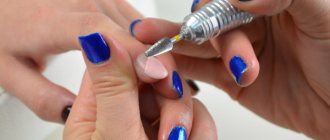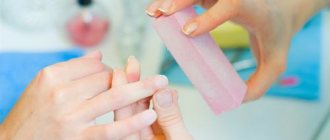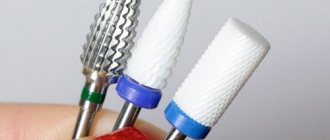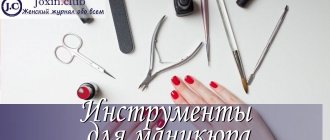It is difficult for a novice master to understand the hundreds of types of cutters offered to complete the equipment. It’s convenient when the machine comes with a good starter kit, and all that remains is to test the attachments and purchase what you need in the process of further work.
But how can a beginner who is creating his own toolkit “from scratch” figure it out? Let's look in detail at what cutters are needed for hardware manicure and pedicure, how to work with them, which manufacturers are on the market and what criteria to use to choose attachments. Let's get started!
Material
Based on material, hardware cutters are divided into the following types:
- Carbide (metal)
- Ceramic
- Diamond
- Corundum
- Sand or silicon carbide copings
- Grinding - made of rubber, silicone, suede
Carbide
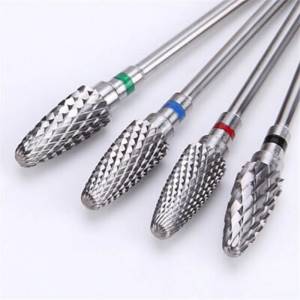
Made of metal and have notches on the surface. As they rotate, the notches cut away the skin or material, leaving a smooth surface.
They work on the principle of a knife. The more pronounced the notches, the deeper the metal penetrates into the extended material or skin.
Ceramic
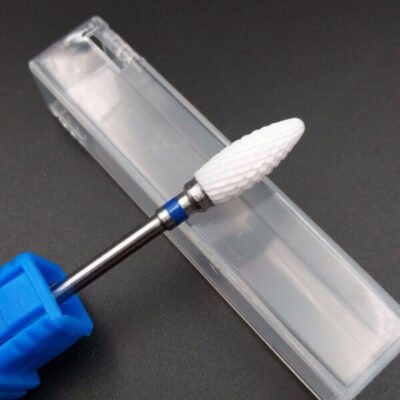
Made of ceramic, they also have notches on the surface. They are fragile, cracks and chips form when impacted, so they require more careful handling when working.
Diamond

They consist of a base and a coating of varying hardness or abrasiveness. Ceramic and diamond nozzles are the most popular in terms of the combination of price-quality-efficiency.
Corundum

They are characterized by high resistance to high temperatures and heating during operation.
Silicon carbide or sand copings

Used for pedicures to treat rough skin and corns. They have a cardboard base with spraying. Disposable. The caps are placed on a rubber base, which is sterilized after use, and the nozzles themselves are disposed of.
Grinding

Depending on the base material - rubber, silicone or fabric, they make it possible to polish areas of different sensitivity in manicure and pedicure. They can also be used in tandem with oil or polishing cream if additional skin nutrition is needed. This is often true when treating feet in a pedicure.
Rating of the best nozzles, cost
The most popular attachments are those that can cope with a wide range of “responsibilities”.
It is worth highlighting the main ones, without which no manicure or pedicure can be performed:
- Magic Bits – wide range and affordable prices. The manufacturer supplies excellent carbide attachments and grinding tools.
- Mühle Maniküre – an excellent range of cutters. The most durable of them are made of ceramics. Ball- and cone-shaped instruments are in great demand.
- Barrel Ball is great value for money. The manufacturer supplies good “corn”, in which the notches “look” in different directions. This ensures uniform removal of material regardless of switching reverse on the router.
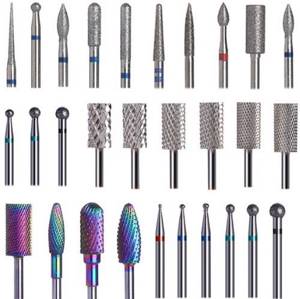
The cost of attachments from Magic Bits varies from 400 to 700 rubles. Milling cutters from Mühle Maniküre cost between 1000-1500 rubles. These are the most expensive tools, and Barrel Ball boasts affordable attachments at different price points. You can buy cutters from them for 100-300 rubles.
Nozzles are selected exclusively according to functional features and intended purpose.
Universal cutters with spraying and fine threads are suitable for all manicure devices. Depending on the power of the unit, work with thick leather and dense materials can take place at a speed of 20,000 rpm. Weak cutters require higher speed even when working with cuticles - to cut it, you need to increase the number of revolutions of the rotating element of the handle to 35,000 rpm.
Types of cutters according to rigidity - colored notches
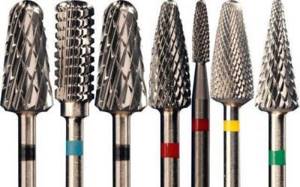
The cutters are hard, medium, soft and very soft. Depending on this, they are recommended for working with leather, gel polish, acrylic and gel nail extensions. The degree of softness/hardness is marked with a colored ring. What does each color of the notch mean:
Black . Rigid cutters used exclusively for processing extended nails.
Green . Rigid cutters designed for removing acrylic, acrylic, gel, gel polish. In pedicures, green tips can be used gently to remove rough skin. Not suitable for clients with sensitive skin or hyperhidrosis.
Blue . Indicates medium hardness. The attachments are designed for working with leather. Not for the nail plate. Also, in some cases, they can be used to remove soft artificial coatings - gel polish and acrylic.
Red . The color marks the soft cutters, which can be used for both the skin and the nail plate. There are diamond cutters with two red serrations, which means increased softness.
Yellow . Soft cutters recommended for working on natural nails and sensitive, thin skin.
White . The softest attachments for sensitive skin and fine work on the nail plate.
What do you need for a hardware manicure at home?
First of all, we need a router and a set of attachments for it. In addition, you will need additional tools:
- Orange sticks or pusher to push back cuticles.
- A special brush that is used to remove dust while processing nails.
- A file (preferably glass or ceramic) with a hardness of 180 – 240 grit.
- Often craftsmen buy a special desktop vacuum cleaner for the convenience of sawdust extraction.
Functionality
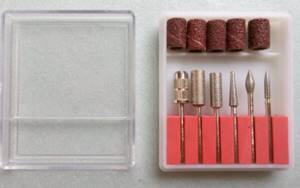
Initially, cutters were used in dentistry and were intended for dental treatment. Only the forms in demand for nail treatment came into the nail industry.
Of the huge number of cutters on the market, each can be used at one or another stage of a manicure or pedicure. But a number of attachments are distinguished by increased functionality and can be used at several stages. Some of them can complete the entire manicure procedure in the hands of a skilled manicurist. Let's look at the most functional cutters for removing coatings and working with skin and nail plates.
Coating cutters
Any attachments with teeth that have indentations between them will do. For gel polish, fine teeth are no more than 1 mm, and for acrylic and gel, deep teeth. This is necessary in order not to saw through areas with an increased risk of sawing, for example, the cuticle, lateral sinuses. Fine teeth leave behind a smooth surface. It is worth focusing not on the speed of material removal, which is provided by deep teeth, but on the safety of removal.
If we take cutters with large threads larger than 1 mm, then even with high-quality material removal, grooves will remain. Next, they will need to be additionally polished with buffs and files, which will require additional time from the master.
The teeth have a direction - clockwise or counterclockwise. There are also reversible teeth, “looking” in both directions at the same time. They are suitable for left-handers and right-handers.
The cone-shaped nozzle is the best for removing material from nails. It provides the largest contact area and the highest processing efficiency.
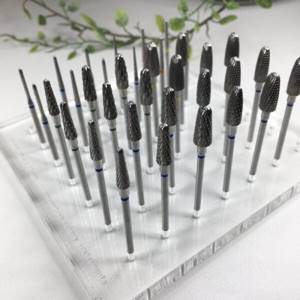
Based on the material of manufacture, it is worth considering the following cutters for removal:
- Carbide cutters are similar to metal cutters, but they wear out quickly. They are enough for 40-50 material removals. The cost of each varies from 100 to 600 rubles from top manufacturers.
- Steel cutters are more durable and wear-resistant. They differ from carbide ones only in the shade of the metal. Their cost starts from 500-600 rubles.
- Ceramic cutters are the most durable and durable. They last for 2-3 years.
There are metal cutters with spraying. This can be plating with galvanic gold or titanium. A distinctive feature of these attachments is the ability to monitor wear. When the coating wears off, it’s time to change the cutter.
Titanium-coated cutters for material removal have a blue iridescent surface. This coating is stronger than electroplating gold. The nozzles are highly wear resistant.
Step-by-step analysis of hardware manicure
Cutters for working with skin and nail plates
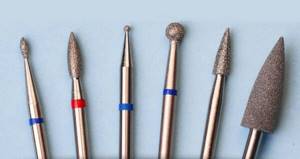
The first category is diamond cutters. They are suitable for manicures, cleaning sinuses, side rollers and cuticle areas.
Different abrasives are designed for different functions.
Diamond cutter categories:
- galvanic;
- sintered monolithic.
Galvanic cutters feature a galvanic base, a metal onto which an adhesive layer is applied and an abrasive is sprayed. This results in a grainy surface. Depending on how these coatings are sunk into the adhesive base, the nozzle will either process well, or quickly become clogged and worn out during operation.
It is best when the spraying is half recessed into the adhesive base. Diamond galvanic cutters last from 5 to 40 manicures, depending on whether they are used to process the coating or just the skin. Economical in cost - from 50 to 650 rubles, depending on the manufacturer and the quality of spraying. They are enough for 1-4 weeks of work with a dense flow of clients.
The marking of galvanic attachments starts from the white notch.
- White notch is rare and practically useless in the daily work of a craftsman. The nozzle is more suitable for polishing.
- Yellow diamond cutter - for working out, polishing the skin, removing remnants of pterygium in sensitive skin.
- Red abrasive is a universal tool for all stages of manicure. The most common use is internal cleaning of pterygium in the lateral sinuses and from the surface of the nail plate.
- Blue abrasive - only for external areas of the skin - cutting the cuticle and processing the side rollers. Not on sensitive thin skin.
- Green abrasive - coarse - is rarely used in manicure. More often - in pedicure for treating calluses and rough skin of the side ridges.
- The black diamond cutter is the roughest and most aggressive. Not for manicure. Can only be used to remove small areas of gel polish in hard-to-reach areas.
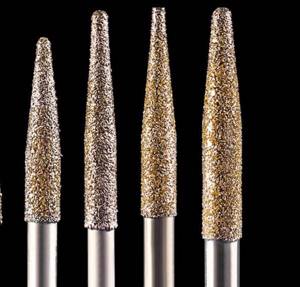
The second category is monolithic or sintered diamond cutters. Serve from 2 to 10 years. Expensive, the price can reach 8,000 rubles.
- Sintered is an attachment in which particles of real diamond are applied to a workpiece and baked in a furnace, turning into a solid tool. It lasts much longer than conventional spraying - up to 3 years.
- Monolithic - differs in that diamond particles are placed on a very thin pecking base, in several rows, and then baked. In this option, there is less choice of shapes, since the technology does not allow making a thin, sharp tip. It's always more rounded.
Categories
In our store there are diamond cutters of three categories:
- Premium
- Sintered.
- Standard.
The differences are in the manufacturer, quality (a good result is guaranteed in any case), cost. The first two varieties are the company’s own brand Myslitsky-nail (HDFREZA), the third is a product of the Mühle Maniküre brand.
Let's compare three cutters of the same shape and abrasiveness. The price indicated is wholesale and retail, there are differences in the speed of work and some features:
| Standard | Premium | Sintered |
| 5,000 – 30,000 rpm | 5,000 – 30,000 rpm | 10,000 – 15,000 rpm |
| The working part may be protruding | There is gold plating (delicate processing) | Multilayer coating |
| 43-80 rubles | 105-150 rubles | 563-750 rubles |
Sintered cutters are the most durable, their working life is approximately 25 times higher than that of conventional diamond bits. It is profitable to buy such cutters for professional intensive use - in the end the tools will cost less. The Premium and Standard segment attachments are suitable for small workloads, for example, for home use or if the master has a large number of cutters, and each is used only for certain types of processing.
Types of cutters by shape and purpose
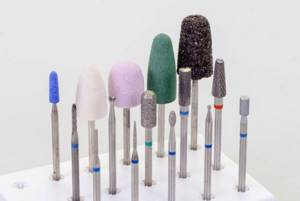
There are hundreds of nozzle shapes. Thin, with a belly, round, square - which ones are used and for what?
For example, a ball cutter is for cutting the cuticle. This is where its functionality ends. Keg – 2 functions. This is work with a cut and side rollers.
Milling cutters with 1 function can be called non-functional in everyday use. A functional attachment is one that copes with several functions and stages of manicure. It is suitable for maximum saving of the master’s time.
The most functional ones are flame - treating the sinuses with a spout, stripping the cuticle with a flat part, removing the cuticle and treating the side rollers with a “belly”.
A master's kit should contain several maximally functional tools. They make it possible to do a “manicure with one cutter.”
Hardware manicure with one cutter: how to do it, choice of attachment
Based on external and internal functionality, there are two more categories of attachments:
- Interior decoration of the nail - any expanding nozzle with a sharp tip - cone, bullet, petal, flame.
- External work on the cuticle and rollers - any spherical nozzle - ball, barrel, large lentils, pear, avocado.
Let's look at a selection of the most popular ones that should be in a novice master's kit at the start.
Flame shape
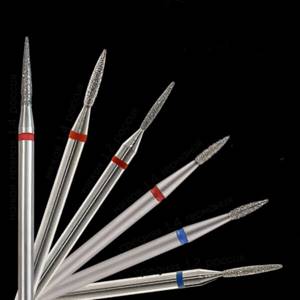
“Flame” with a blue notch is used to lift and clean the cuticle and treat the sinuses. Difficult to work for beginners due to the roundness in the central part, there may be cuts. Hold at an angle of 45°.
Needle shape

It is also called fisurnaya. Carbide. Convenient attachment for lifting and opening the cuticle and removing pterygium. Suitable for filing a natural nail from the inside when correcting extended nails. Needed with a blue notch. When working, it is necessary to hold it almost parallel to the nail so as not to injure the client with the sharp end.
Corn shape
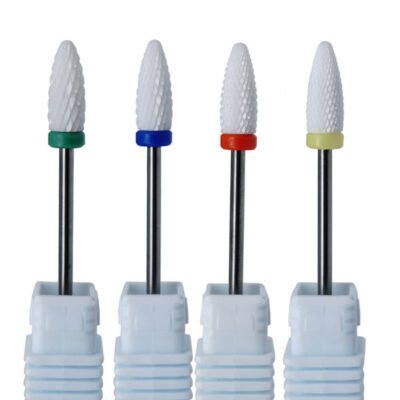
Ceramic or carbide “corn” with a green or blue notch is very convenient for removing gel polish and artificial extension materials. Also shape the length of the nail and perform correction. Hold it parallel to the nail when working.
Cone shape

The most popular for lifting and opening the cuticle at 90°. For this, a diamond or corundum cone with a blue notch is used.
Ball or sphere shape
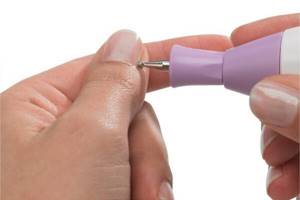
This shape has blue and red notches. Used to cut cuticles, side ridges and hangnails. The ball can be of different diameters. It is convenient for small children to remove the pterygium, and for medium-sized children it is convenient to cut off the cuticle.
Lentil or bullet shape
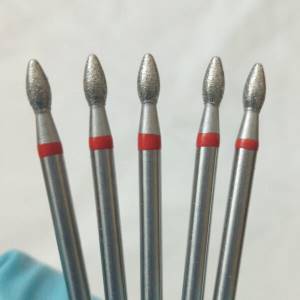
A diamond bullet is used to remove the pterygium after lifting and opening the cuticle with a 90° cone. It can also completely replace the flame and cone until the very stage of working with the ball.
Drum or cylinder shape

The nozzle is used to remove the length of nails and artificial material. Carbide. A very traumatic attachment that beginners need to use carefully. Due to the sharp edges, there is a high risk of damaging the cuticle, so it is better to work near the cuticle with a nozzle with a rounded edge.
Rounded cylinder or roller shape
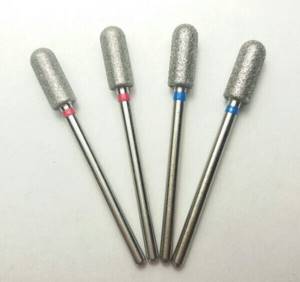
Suitable for cutting cuticles and side ridges without the risk of injuring the nail plate.
Care
The soft covering deteriorates after prolonged disinfection, so it is necessary to reduce the time. The average duration is 30-40 minutes. After immersion in the solution, the nozzles must go through the remaining processing steps. Required:
- Cleaning under running water.
- Manual cleaning with a brass brush.
- Ultrasonic treatment.
- Immersion in dry heat or autoclave.

When performing a manicure, do not squeeze the handle too much or press on the nozzle. This causes the head to bend at the base of the handle, so the cutter will be unusable. The nozzle must be changed according to the instructions supplied with the device.
After sterilization, the cutters are placed in a cover that protects them from moisture, dust, and mechanical factors. The device must be adjusted and cleaned in a timely manner at a service center.
Safety cutters

The conditions for safe use of a cutter are compliance with the basic rules of work.
Such criteria include:
- incline;
- pressure intensity;
- position angle;
- aggressiveness of the instrument.
99% of attachments will be dangerous if mishandled.
The first category of safe cutters is Silicone Carbide Grinders. They consist of a mixture of silicone with carbide chips, giving it the desired shape for manipulation in manicure. They are convenient for cleaning ridges and pterygium from the nail plate.
Silicone carbide grinders come in different shades, which are responsible for marking the abrasive. Possible colors are green, gray, brown.
- The softest ones are green. Only polish the skin: fine grinding and polishing of the nail plate.
- Gray is a more functional sander. Removes small burrs and dry areas.
- Brown is the most functional, as it polishes both the cut and the skin, and removes pterygium from the nail plate. It is the brown silicone carbide grinder that can be called a safe attachment. It has a soft and elastic surface with small abrasive inclusions, which removes only soft tissues, and cannot damage the nail or strong skin.
The second category of safe ones is Corundum stones . Used to polish the skin and clean off the pterygium. They are considered safe, but do not forget that this is a stone. Its difference is that the surface does not consist of bulges, but of small pores and depressions that capture and clean the skin. If the pressure and position in relation to the work surface are incorrect, it is still capable of making cuts.
Safe cutter “Oney Clean” - without abrasive, with blades. It can be used to remove pterygium from the nail plate without scratching it, and also lift the stuck cuticle. Like any rotary tool, it requires careful operation. If you grip incorrectly and apply intense pressure, you can make cuts with it.
Recommendations for choosing cutters

What attachments are best for beginners? A novice master will need a minimum selection in the set:
- Diamond bullet, flame or red cone tip for lifting, opening cuticles and cleaning side ridges
- Diamond ball small and medium with blue notch for removing cuticles and treating side rollers
- Diamond cone for cleaning pterygium
- Carbide cutter drum or cylinder for removing artificial material
- Ceramic Corn for Removing Artificial Material
- Silicon Carbide Caps with Rubber Base for Pedicure
- Diamond needle for treating cracked feet
- Sanders of different sizes and degrees of softness for manicure and pedicure
Beginners are advised to start with tools marked with blue notches and use bits with rounded edges.
For example, a blue ceramic cutter is the safest for removing gel polish, but is not suitable for gel and acrylic. To remove artificial material, purchase a ceramic corn attachment, not a cylinder, so as not to damage the cuticle.
Abrasiveness
There are 5 types of nozzle grain sizes - from fine to coarse. They are marked with multi-colored notches on the shanks:
- yellow - the smallest, used for soft surfaces, not dangerous;
- red - popular with novice masters, low risk of injury to soft areas;
- blue - medium abrasiveness, it is chosen by professional craftsmen, suitable for any surface;
- green - used for rough surfaces, artificial nails, pedicure;
- black - the coarsest grain size, high risk of injury, suitable only for processing artificial nails (mainly acrylic) and removing dead skin on the heels.
What is the difference between cutters for manicure and pedicure?
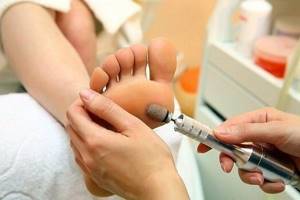
At the stage of processing the cuticle and nail, there are practically no differences in the use of cutters for manicure and pedicure, with the exception of a slight increase in the rigidity and size of the attachments when processing the feet, since the skin on the feet is rougher and the treated areas are larger.
In pedicure, in addition to treating nails and cuticles, there is an additional stage of treating feet, which will require attachments for removing calluses, removing cracks, grinding and polishing. Drum attachments, silicon carbide grinders, and silicone polishers can handle this. A large needle attachment is used to treat cracks.
Flaws
Although hardware manicure has many advantages, there are also disadvantages:
- Due to inept use of the cutter, there is a risk of injury to the nails.
- Not exactly a clean result. Many people have voluminous cuticles, and for the aesthetic appearance of their hands, it is advisable to cut them off.
- Expensive device. Compared to trimmed and untrimmed manicure, to perform hardware cuticle removal you need to buy an expensive device, as well as milling attachments.
- Difficulty in maintaining equipment. Cutters must be regularly cleaned and disinfected, and if handled improperly, they can be damaged.
Selection criteria, manufacturers, requirements
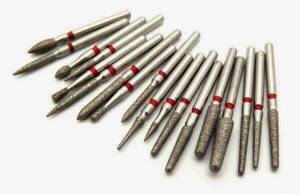
Milling cutters can be purchased both online and offline stores. A manicure machine often comes with a starter kit; if it is not there, it is better to make a list of the necessary tools yourself and purchase separately good quality tools with reviews.
You can buy an inexpensive starter kit separately, but you'll end up with a few good working attachments and the rest sitting around.
Proven manufacturers of manicure devices and accessories with high ratings, reviews, well presented in stores:
- Naomi 24
- JessNail - distinguished by high quality products
- RuNail – market favorites in terms of price-quality ratio
- Magic Bits – provide a large selection of models
- Irisk Professional – popular, affordable tools
- TNL Professional – high quality, professional line
- HDFreza - inexpensive attachments for pros and beginners
- Planet Nails – high-quality tools, relatively expensive
Which cutters are best for hardware manicure? Experienced craftsmen praise German-made tools for their quality and durability, and in everyday work they also choose favorites from the domestic market.
Depending on the manufacturer, the price category of materials also changes. The cost of a cutter starts from 100 rubles and can reach 1000 rubles and more. For the same price in the same store you can buy a whole set of 10-30 attachments. Focus on quality and manufacturer.
When to change and how to sterilize manicure cutters
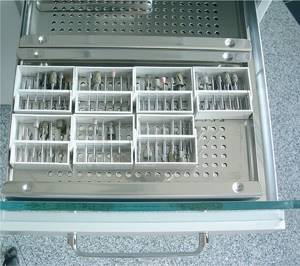
The cutters undergo the same sterilization treatment as other tools in the master’s kit. After use, disposable attachments are disposed of, and reusable ones are treated with a disinfectant solution, washed with a brush under running water and sterilized under temperature or pressure. Recommendations on exposure time to the sterilizing medium are best found in the instructions. Read more about sterilization and disinfection of instruments.
The service life of cutters depends on the intensity of work, the quality of the material used in production, as well as the professionalism of the craftsman. Diamond - 3 years, carbide - 5 years, ceramic - 1-3 months, silicone - more than a year.

When disinfecting, pre-sterilization cleaning (PSC) and sterilizing hardware attachments, you must refer to the “Rotary instruments” mode in the instructions.
The first feature is that for disinfection and PSO you will need a solution with an alkaline reaction and the presence of active detergent components.
In addition to removing viruses, fungi and bacteria, the disinfection solution must soak, loosen, and dissolve the remains of biological material on rotary instruments. Why is this necessary?
Milling cutters have a porous structure, into which dirt and skin become clogged, and they cannot simply be wiped and washed like flat ones. With further processing at high temperatures, the remaining skin and blood may be baked. Complete sterilization does not occur, and the nozzle quickly fails. Therefore, disinfection with a cleaning effect is needed.
The following solutions are suitable for this:
- Aktibor . Expensive, ready to use;
- Mistral . Concentrate, dear. Takes care of the instrument, does not cause corrosion, and does not dull the instrument in comparison with cheap analogues;
- Multidez . Concentrate, affordable price.
After disinfection, a mandatory step is pre-sterilization cleaning. PSO consists of three sub-stages:
- Cleaning occurs immediately in a disinfectant solution or simply in water, using a brush with nylon bristles. Soaked remains of biomaterial are easier to remove.
- Rinsing - can be done under running water, according to the instructions, to remove any remaining solution.
- Drying - Prevents corrosion and extends the life of the attachments. It can be carried out in natural conditions, on a napkin, or under a source of warm air.
Sterilization is performed in an autoclave or dry-heat oven. An autoclave does not damage instruments, but it is expensive. Therefore, it is suitable for large salons. Dry fire can be selected at an affordable price and used by craftsmen and at home.
- Dry heat sterilizes in the “180°C, 60 minutes” mode. A certified dry heater has a vacuum chamber. All rotary tools, even silicone carbide grinders, can withstand temperatures of 180°C. If there is no temperature control in the chamber and poor convection - air distribution - then the nozzles can deteriorate. This can be determined by burning Kraft bags. The dry-heat treatment cycle is 1-1.5 hours.
- Autoclave – processing at a lower temperature, but under pressure. Full cycle time is 30 minutes. The autoclave does not dull the instrument and the occurrence of corrosion is minimal.
Hardware attachments are sterilized on stands so that vibration does not cause friction against each other and abrasion of working surfaces. The second option is sterilization in craft bags, in sets.
In the process of mastering the technique of hardware manicure, try working with different cutters. The basic set should be in two versions - with blue and red notches. Observe the speed limit of the device depending on the diameter of the nozzle. What cutters does your ideal set consist of? - write in the comments, don’t be lazy
